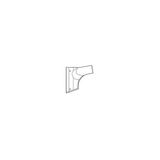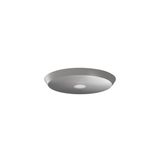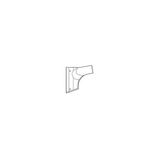Siteco Industrial Automation







siteco automatics and control Application scope and brand context
Projects move faster when controls are predictable and drivers respond exactly as modelled. Siteco builds control gear for offices, retail, logistics halls, and streetscapes with the same engineering logic: stable dimming, clean electromagnetic behaviour, and wiring that matches European practice. You’ll find mains 220–240 V AC devices alongside SELV controls, with clear torque values, conductor windows, and temperature classes so panel drawings translate to the ceiling grid without rework.
siteco lighting control systems Range and topologies
Portfolio coverage includes stand-alone room controllers, corridor and daylight systems, centralised DALI-2 networks, and outdoor nodes for roadway luminaires. Typical layouts: single loop (up to 64 DALI addresses), multi-loop gateways for large floors, and IP backbones when spaces exceed DALI cable limits. Sensors land as PIR/HF with integrated lux meters; scenes and schedules sit in the controller so lighting holds state even if the BMS drops. For façades and canopies, time-astral and photocell inputs prevent overrun and keep kWh predictable in winter/summer shifts.
siteco control modules Interfaces and I/O
I/O cards bridge field wiring to drivers and the BMS: DALI-2 (IEC 62386 parts 101/103/207/208/251/252/253), 1–10 V, switch-dim, and relay outputs for non-dimmable circuits. DT6 handles intensity per channel; DT8 supports tunable white or RGBW with channel-balanced control. Typical bus current budgets are 250 mA per loop with ~2 mA per device—published headroom avoids greyouts at startup. Auxiliary inputs take potential-free contacts from fire panels and occupancy counters; fault relays report driver or lamp failures to maintenance.
siteco dimming systems Protocols and driver behavior
Phase-cut control exists for legacy loads, but professional results come from DALI-2 or 1–10 V with proper driver pairing. Flicker metrics target PstLM ≤ 1.0 and SVM ≤ 0.4 for offices; drivers declare PF ≥ 0.90 and THD ≤ 10–15 % at rated load. Broadcast mode simplifies small rooms; addressable mode suits open offices where task/ambient layers differ. PWM frequency and minimum-level curves are documented so cameras in studios and retail aren’t bothered by banding.
Technical specifications and standards
Safety and control gear align with IEC/EN 61347-2-3/-2-13 (control gear), IEC 60929 (1–10 V), IEC 62386 (DALI-2), and EN 61547 immunity. Emissions meet EN 55015; harmonic limits follow EN 61000-3-2. Operating temperature typically −20…+50 °C (storage to +80 °C). Device IP classes range from IP20 in-ceiling to IP65 for canopies; IK data is available on vandal-exposed fronts. Cable lengths: DALI 300 m at 1.5 mm² (typical), SELV segregation per EN 60598. Surge paths: 2–6 kV immunity by family; coordinate with Type 2 SPDs in the board.
Applications and compatibility
Offices and education: presence-based trimming to 300/500 lx, task tuning, and daylight harvesting with DT8 tunable white in collaboration zones. Retail: small beam accent layers over a broadcast ambient channel; scene calls via wired buttons or app. Warehouses: daylight zones along rooflights; aisle sensors with fade times that prevent “light waves.” Streets/parking: photocell plus schedule and power monitoring per feeder. Where a schedule names siteco automation devices, list protocol, channel count, bus power, and IP class on each tag so buyers lock the correct SKU set. For connected campuses, specify siteco smart lighting controls when analytics, energy dashboards, or API hooks to the BMS are part of scope.
Integration with other Siteco products
Controllers pair natively with Siteco indoor luminaires and outdoor heads—DT6/DT8 profiles match the driver catalogue, so color and intensity track exactly. Mast and pole systems accept control nodes in standard spigots; cabinet kits mount on DIN rail beside metering. For façade media, RGBW drivers synchronize via DALI-2 DT8 or gatewayed DMX, while SENTRON-type distribution (brand-agnostic) provides upstream protection with documented inrush and diversity.
Selection criteria for B2B clients
- Define control objective: constant lux, scenes, tunable white, or energy curtailment.
- Pick protocol by load mix and reach: DALI-2 for addressability, 1–10 V for simple zones, gateway to IP when spans grow.
- Size the bus: device count, per-loop mA, cable gauge and length; leave ≥20 % headroom.
- Confirm driver behaviour: minimum level, fade curves, PF/THD, flicker targets for camera-heavy areas.
- Environment: IP/IK, ambient, and surge class; plan sealed enclosures outdoors.
- Commissioning and ops: choose tools, backup strategy, role-based access, and spare sensor packs.
If your tender references siteco lighting management units, align them with metering class and the BMS interface (BACnet/Modbus/OCPP-adjacent where EV loads tie in) so energy reporting remains auditable.
Advantages of working with Bankoflamps
We map channels, loops, drivers, sensors, and gateways to your room data sheets and single-lines, then expose live EU warehouse stock before access nights are booked. Quotes typically return in about an hour with EAN/MPN, bus budgets, IP/IK classes, surge notes, and accessory packs spelled out—so selections don’t drift mid-phase. Your portal shows real-time lead times, shipment status, and downloadable price lists with validity periods. Approved accounts can use post-payment up to 30 days. We group shipments by floor, zone, or pole run to cut freight and on-site sorting, and your account manager cross-checks protocol mix, spare capacity, enclosure depth, SPD policy, and commissioning tools against your drawings—so kits arrive build-ready and technicians program once.